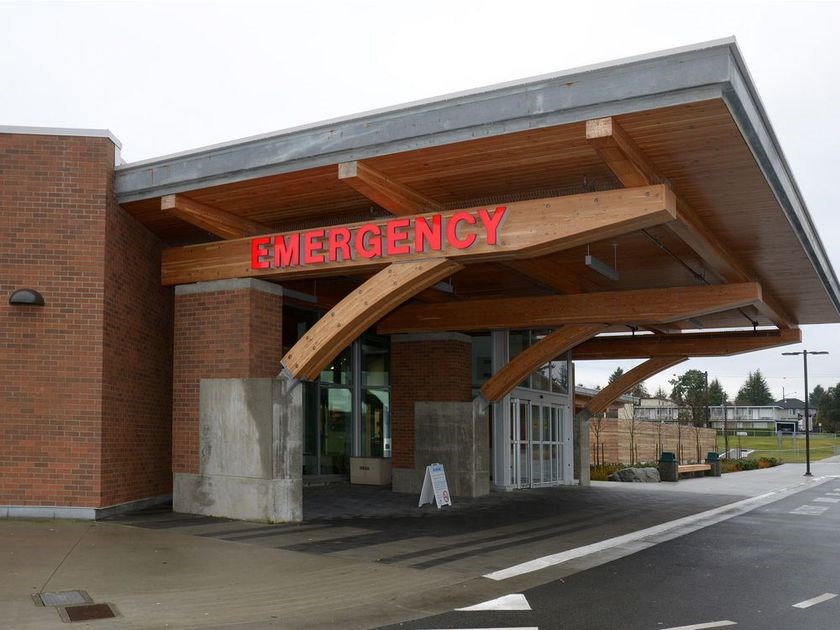B.C.’s Health Ministry is being criticized for how it publicly reports the number of COVID patients in intensive-care beds. Ministry numbers only include people who are infectious and not those who are still recovering in intensive care.
B.C. Green Party Leader Sonia Furstenau, who has often asked the NDP government for more transparency in the reporting of health data related to COVID, said it’s important to know why the ministry reports COVID ICU numbers the way it does, noting Manitoba reports all hospitalizations whether infectious or not.
Damien Contandriopoulos, a public health researcher at the University of Victoria, said the B.C. Centre for Disease Control online numbers showing COVID ICU patients do not align with the number of people actually in ICUs and that reporting “is hard to justify on any basis.”
Infectious disease specialist and critical care physician Dr. David Forrest said there were a dozen COVID-19 patients in intensive-care unit beds at Nanaimo Regional General Hospital on Thursday.
The public reports, however, would show 11 because the 12th patient is recovering — even though that patient might occupy an ICU bed for several more weeks, he said.
“Many of us have complained that there is a disconnect,” said Forrest. “I don’t think that there’s intent to deceive … I think it’s just simply this misunderstanding of what’s important to know about.”
The Health Ministry attempted to explain that accounting and reporting in a news release on Friday.
“Once a patient in critical care is no longer infectious with COVID-19, the patient is removed from daily critical-care totals,” said the Health Ministry. “Some patients who entered hospital or critical care as a COVID-19 patient may no longer be counted as COVID-19 patients once they are no longer infectious, even though they remain in hospital.”
The Health Ministry said it looks at hospitalizations and critical-care beds to ensure the system is running efficiently at or near capacity but not over capacity. On the other hand, the B.C. Centre for Disease Control’s surveillance reports and the numbers in the daily report have a different function, said the ministry.
“They report the number of people with COVID-19 who require hospital or critical care,” said the ministry. “This gives an understanding of the severity of illness and only counts the individual once even if they are hospitalized more than once or have several stays in critical care.”
A COVID patient in a hospital bed is a COVID patient in a hospital bed, Contandriopoulos said.
The public health researcher said the ministry’s explanation is that BCCDC is only interested in infectious COVID cases and the hospital system is only really interested in the number of patients overall in beds whether it’s COVID or not and that no one is interested in total beds occupied by COVID patients “but I do not buy that explanation.”
“Infectious, not infectious, it’s not what I think the public is interested in, we’re interested to know if our hospital system is going to crumble because of the COVID numbers so that’s what we would like numbers about,” he said.
People are worried and want to know exactly what’s going on in our hospitals, he said. “These days it’s more important than ever that we can be confident that the hospitalization numbers really are what they should be and they’re not.”
The tradition in Manitoba, said Contandriopoulos, has been to have completely transparent public health data even prior to the pandemic. Other provinces have not been totally forthcoming with reliable data but B.C. has been fudging the data, he said. At the technical level, it’s super easy to provide the total COVID ICU and hospital numbers, said Contandriopoulos, “so the challenge is not technical.”
“COVID is a big political issue and governments are being judged on whether or not they’re doing a good job of COVID and it seems that sometimes it’s easier to play with the data than to play with a disease,” he said.
Furstenau said she’s pleased the ministry provided an explanation, albeit complicated, and won’t judge why it’s reporting the way it does, only that the public still doesn’t know why.
“I think it’d be really good for the public to understand what was the decision process as to why cases are counted this way,” said Furstenau. “And what is the outcome the government is trying to achieve from that.”
Transparency of not just numbers but transparency of the decision making and the mission is critical, said Furstenau.



